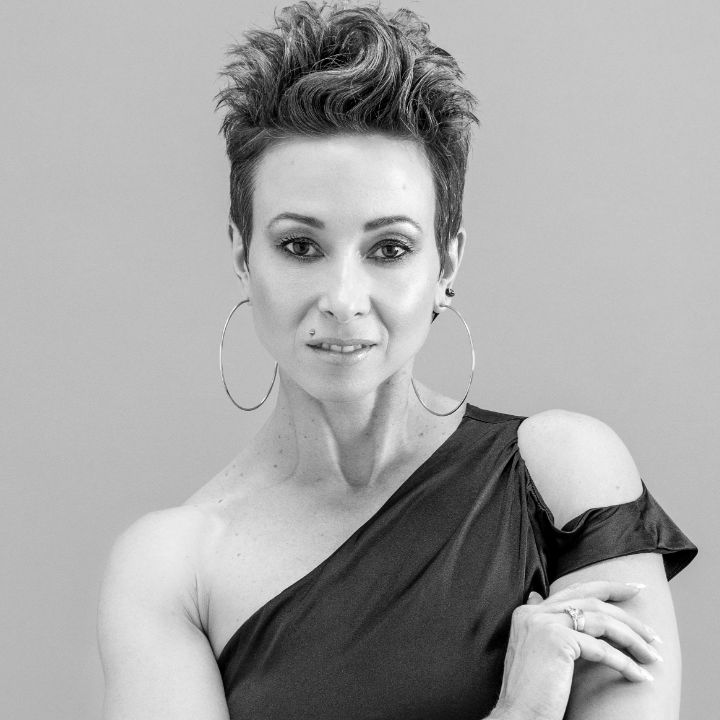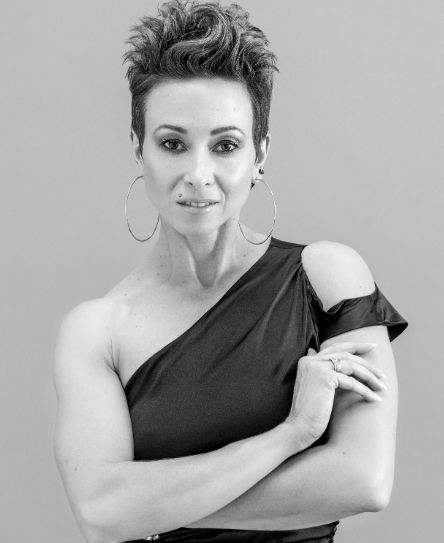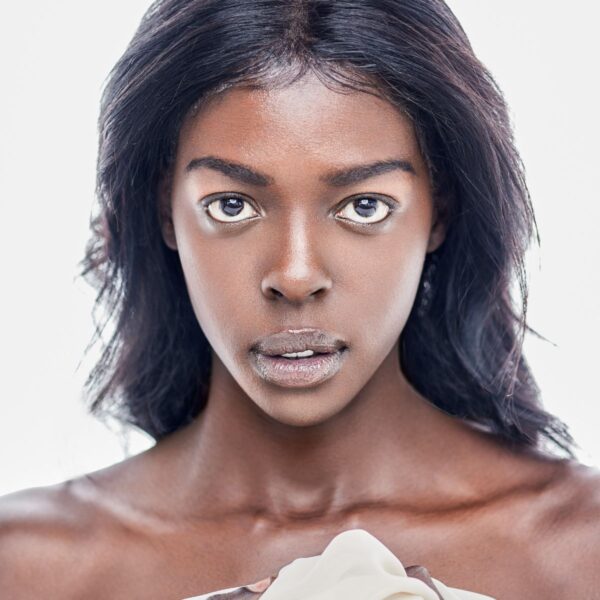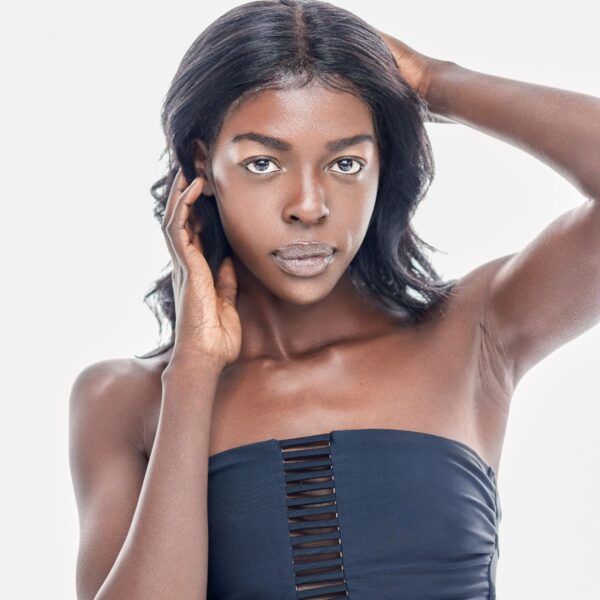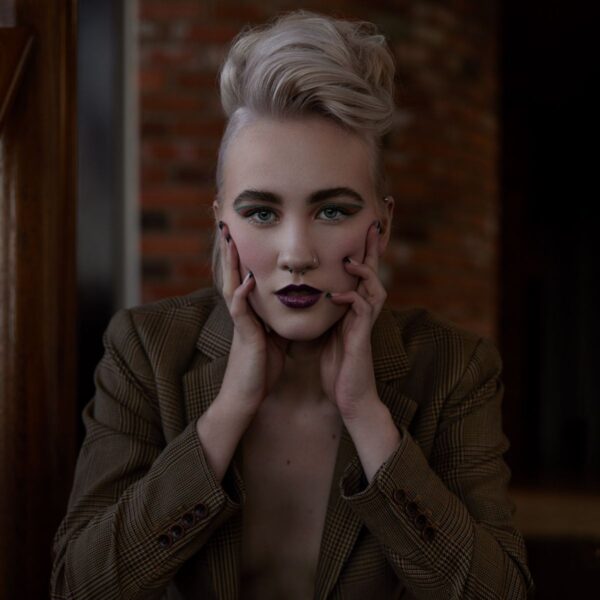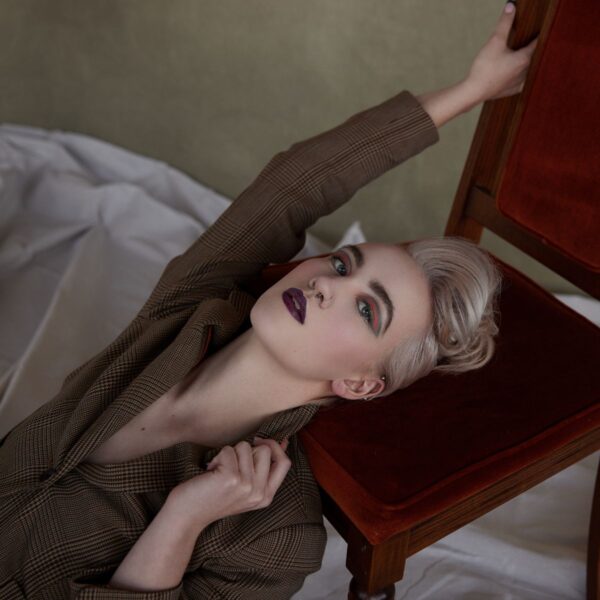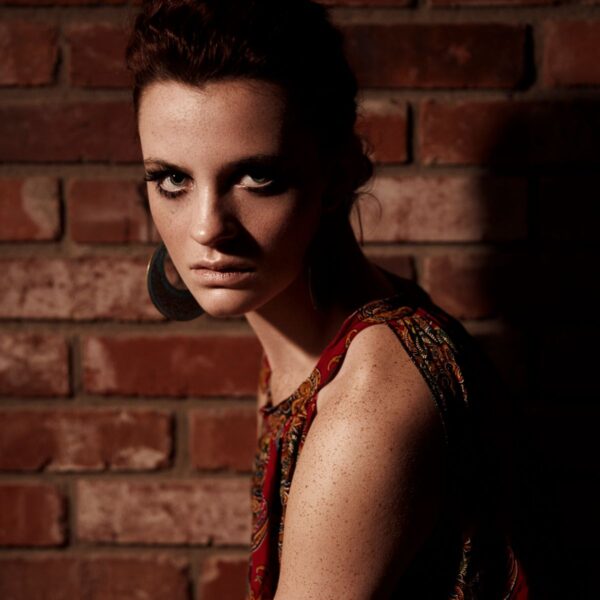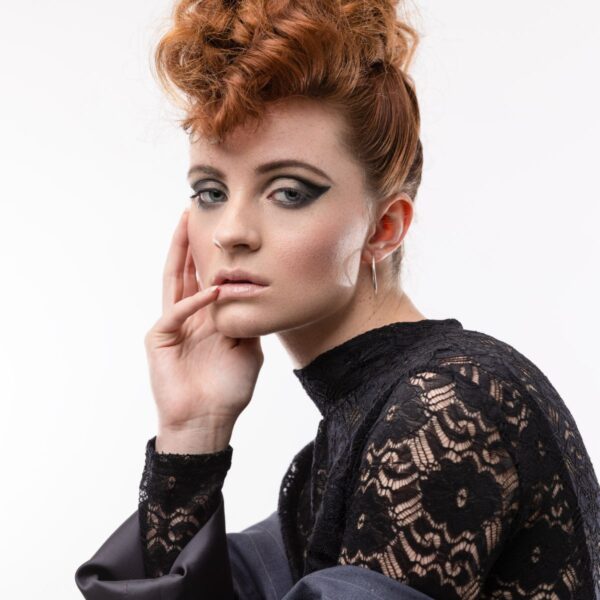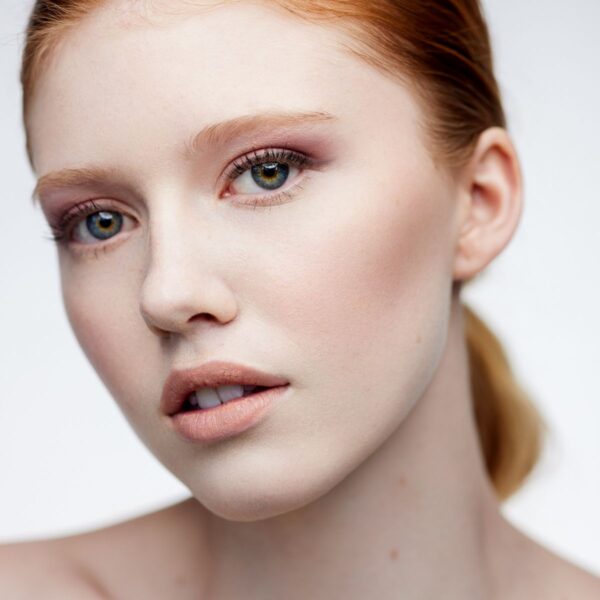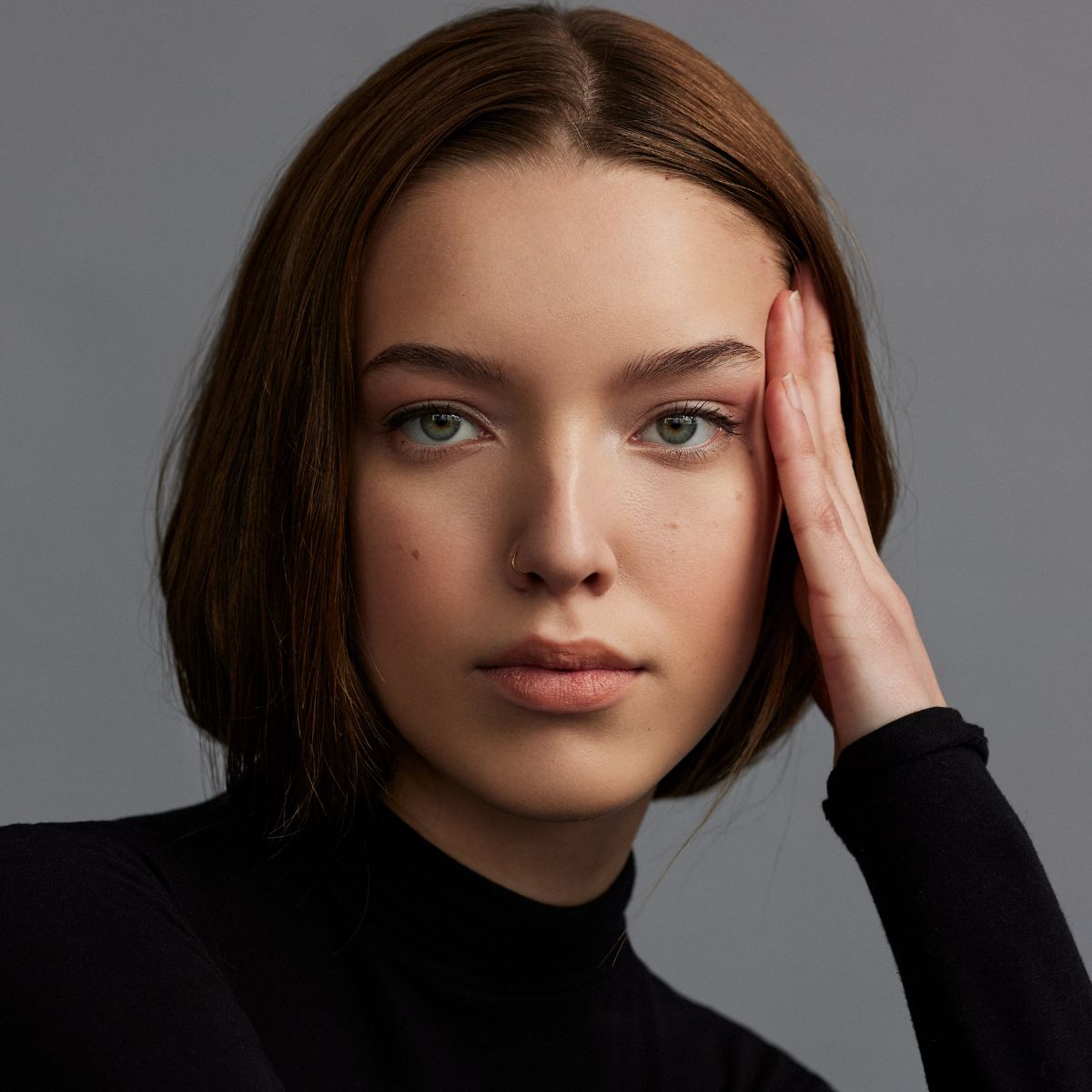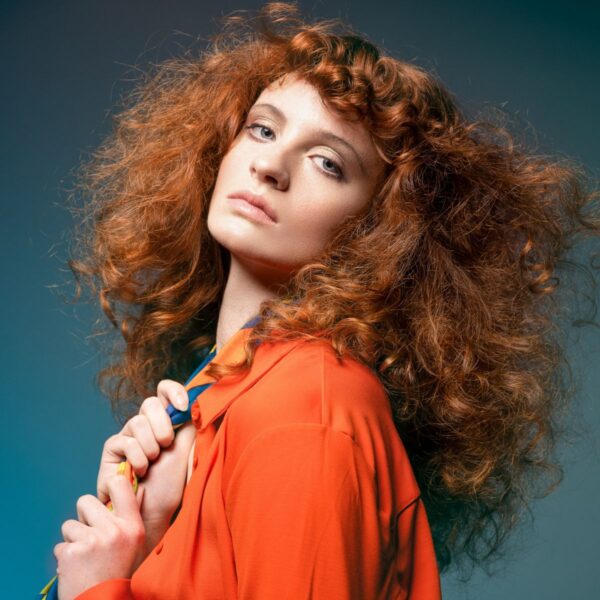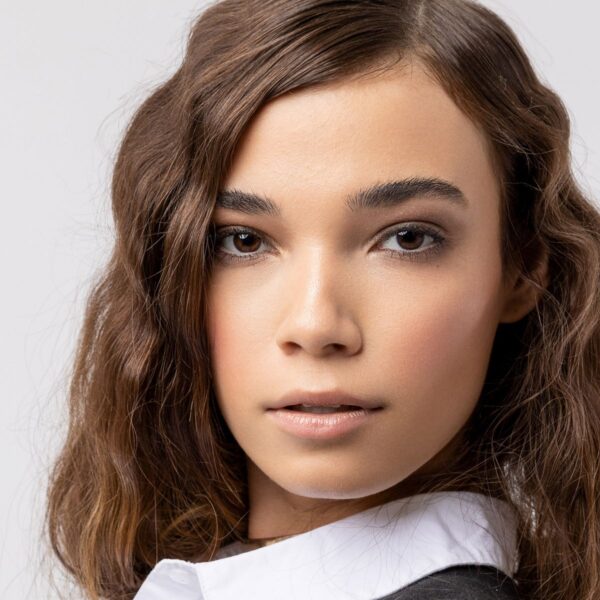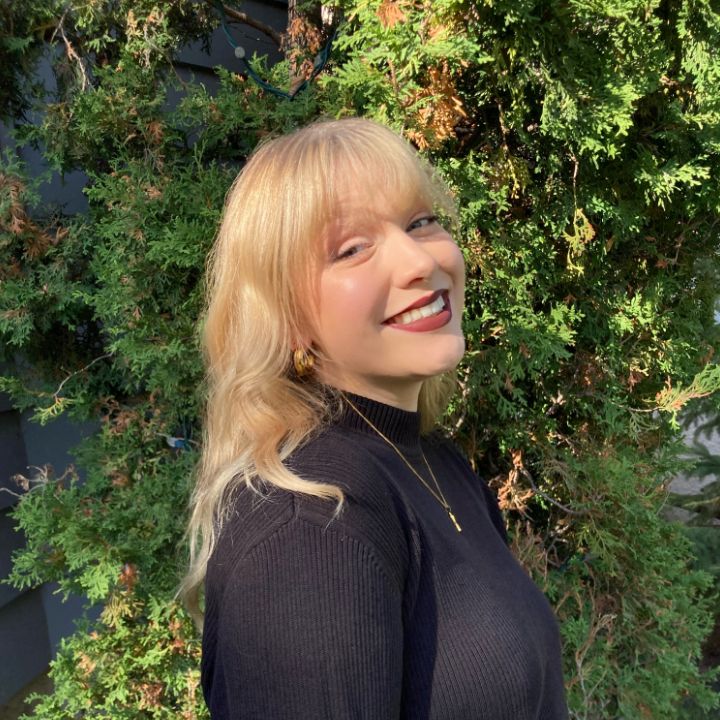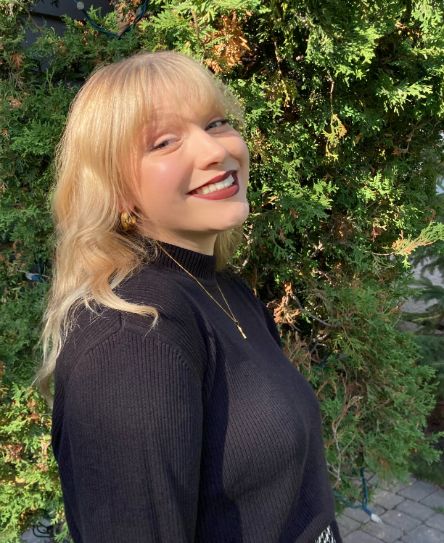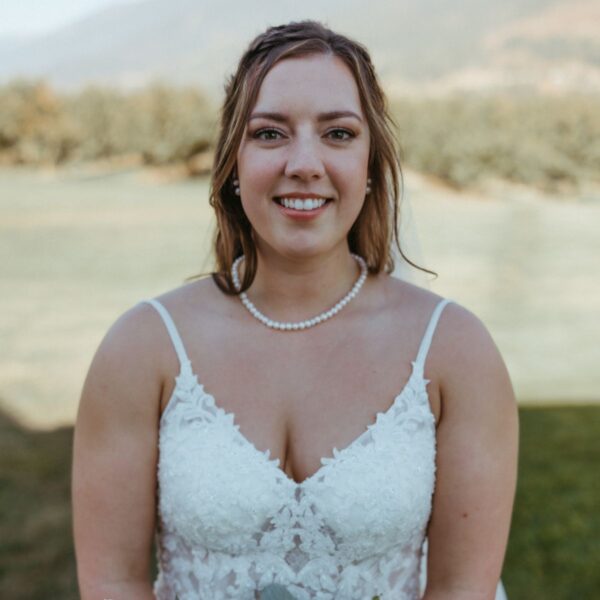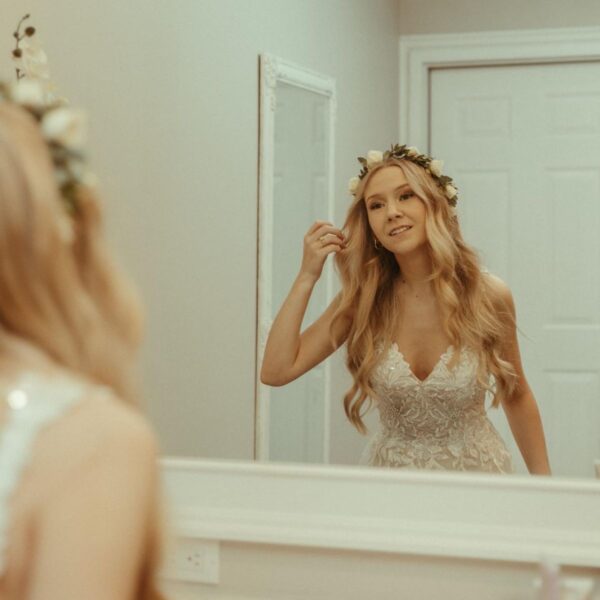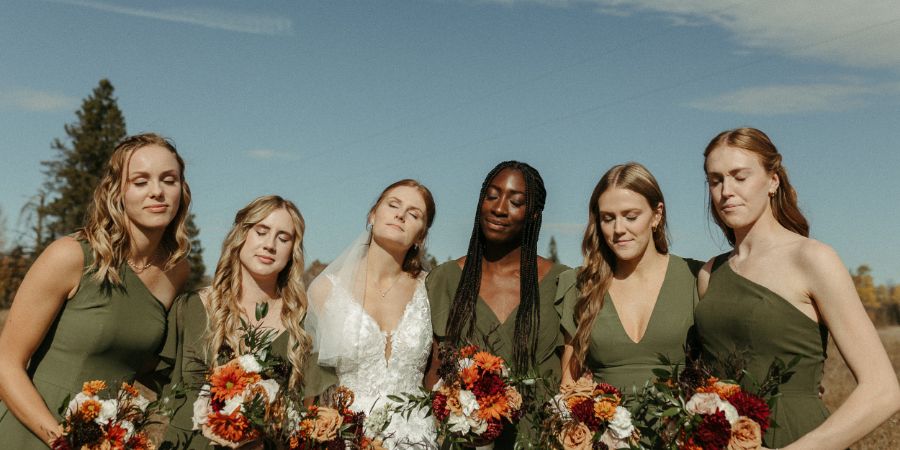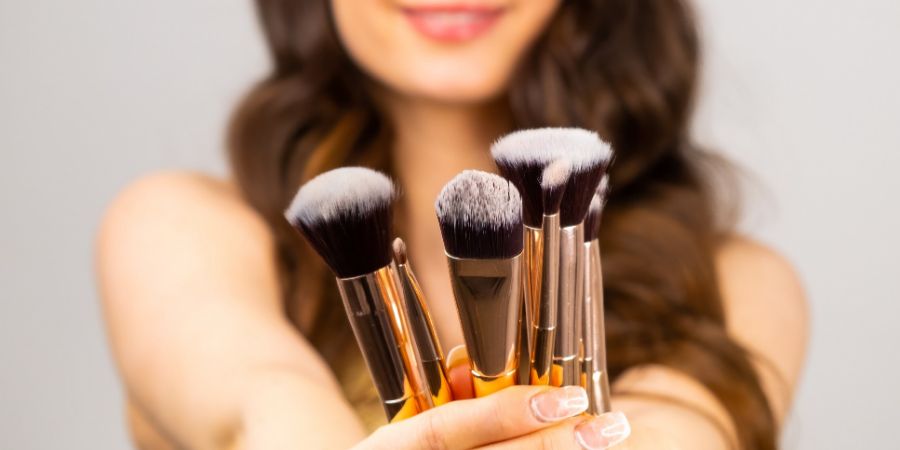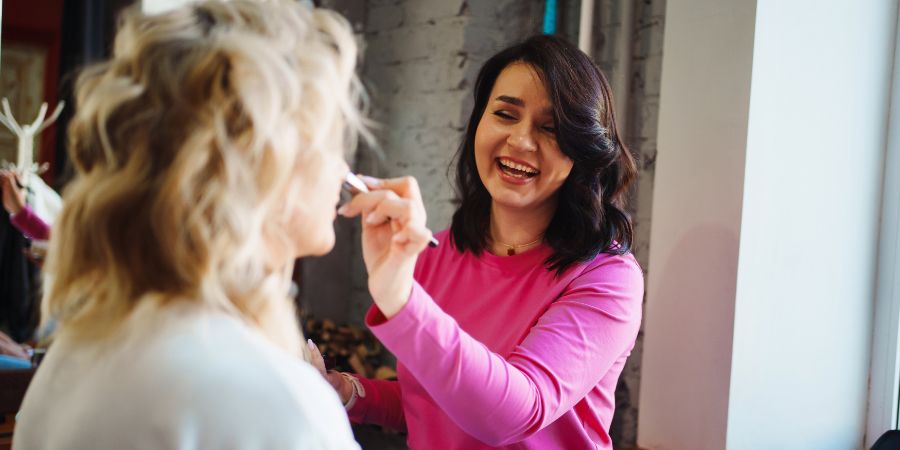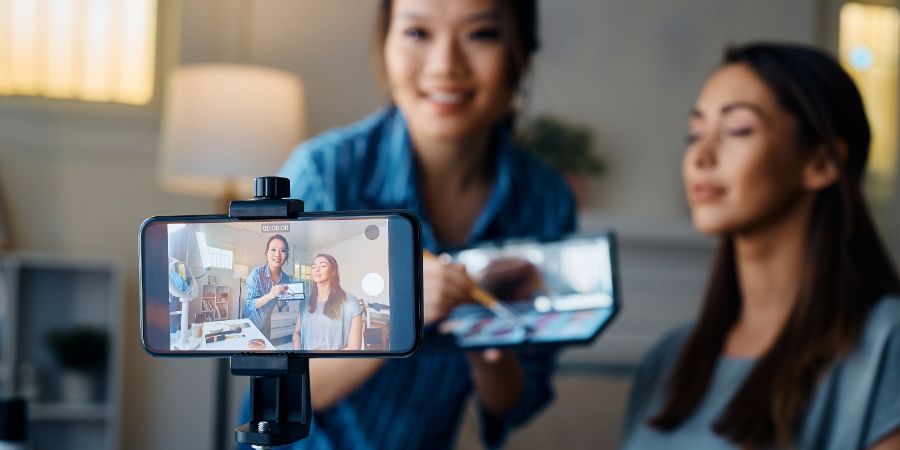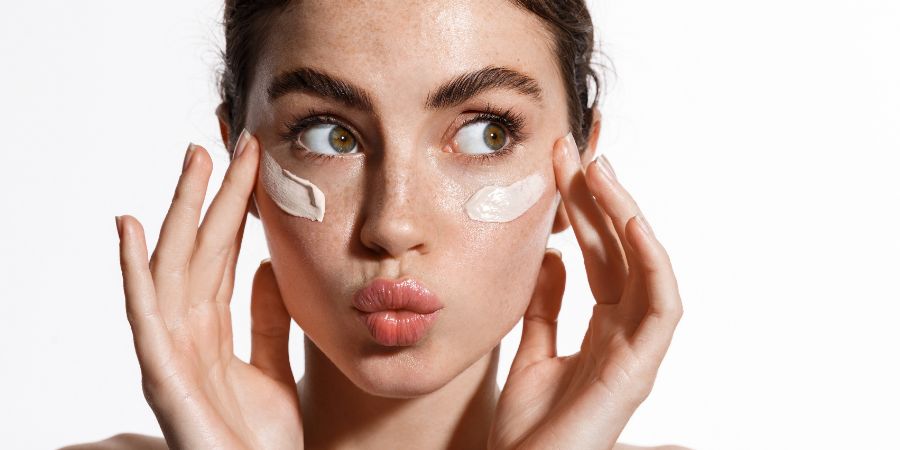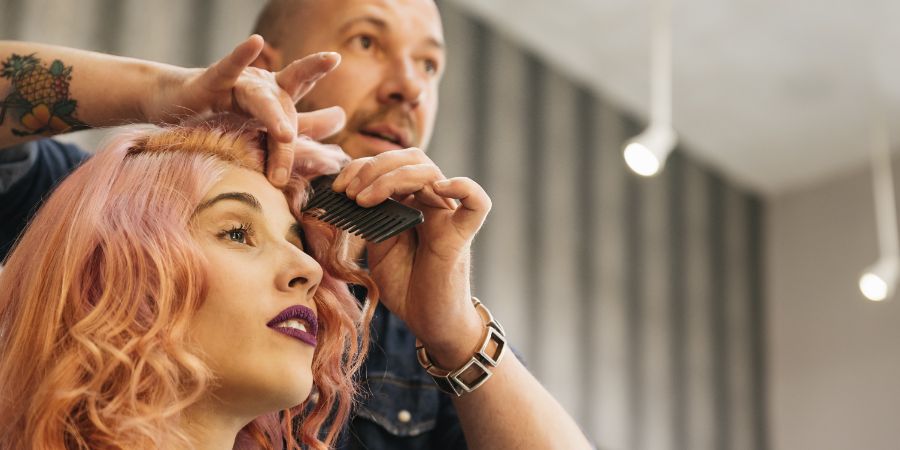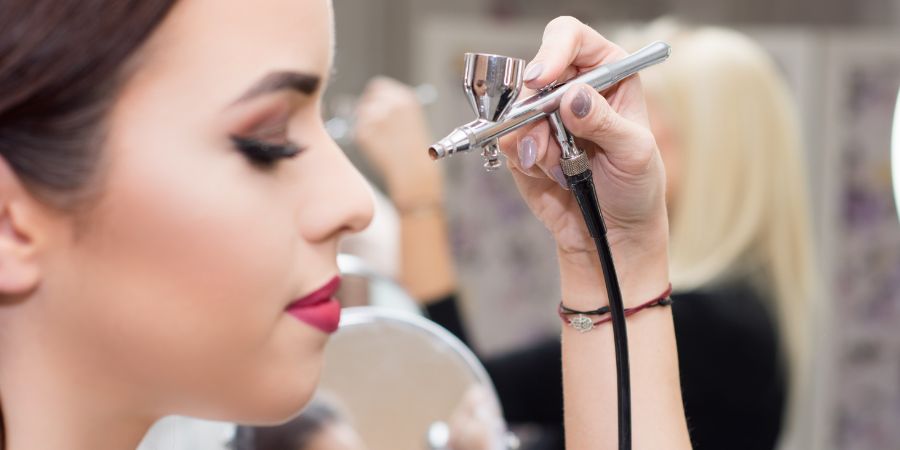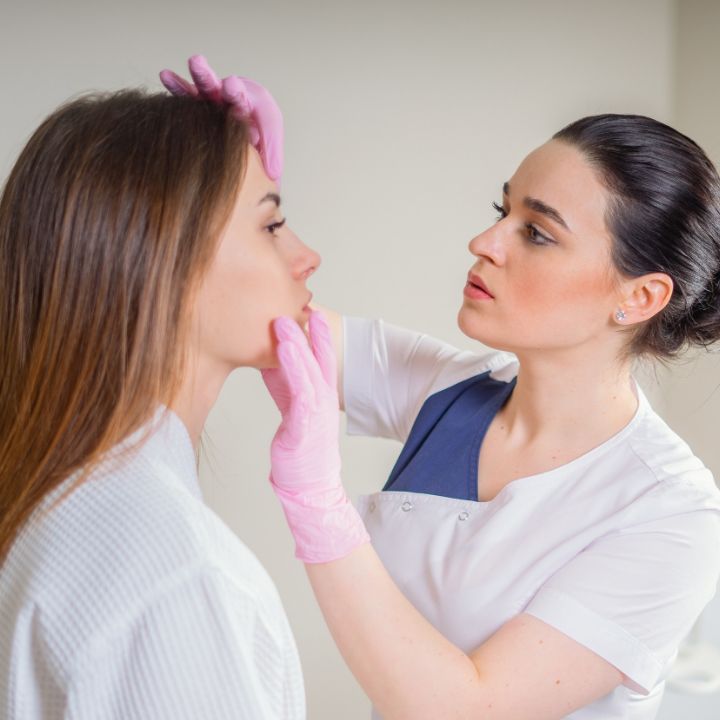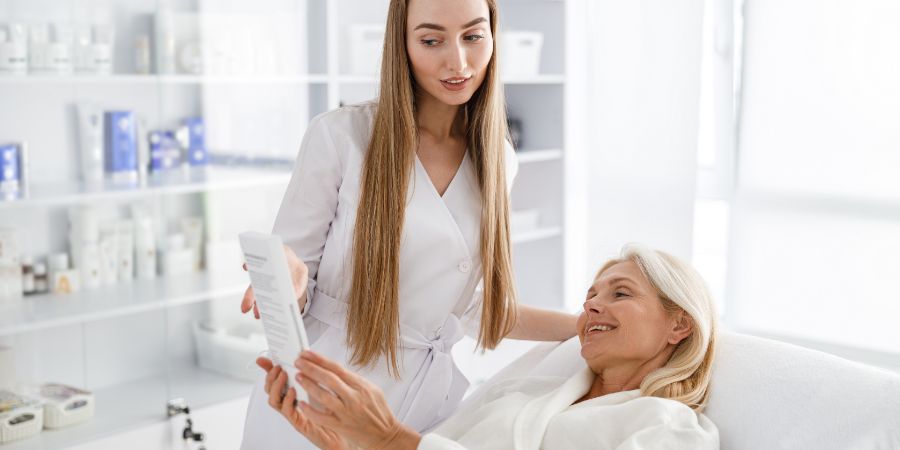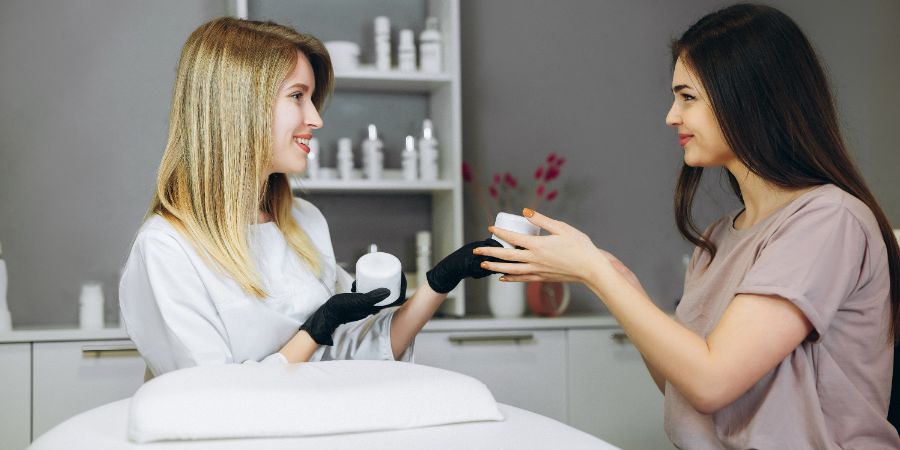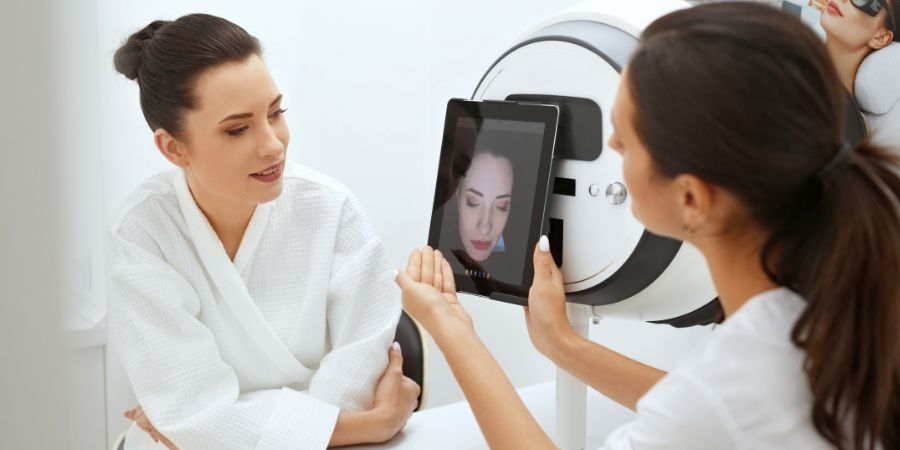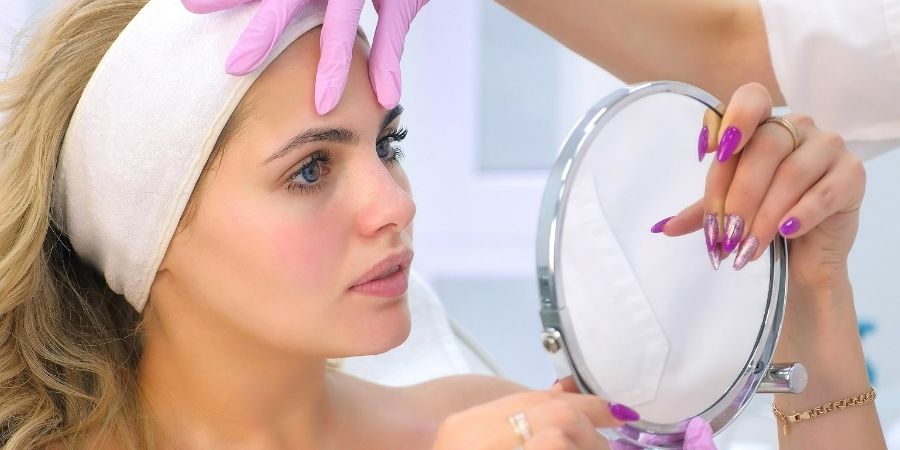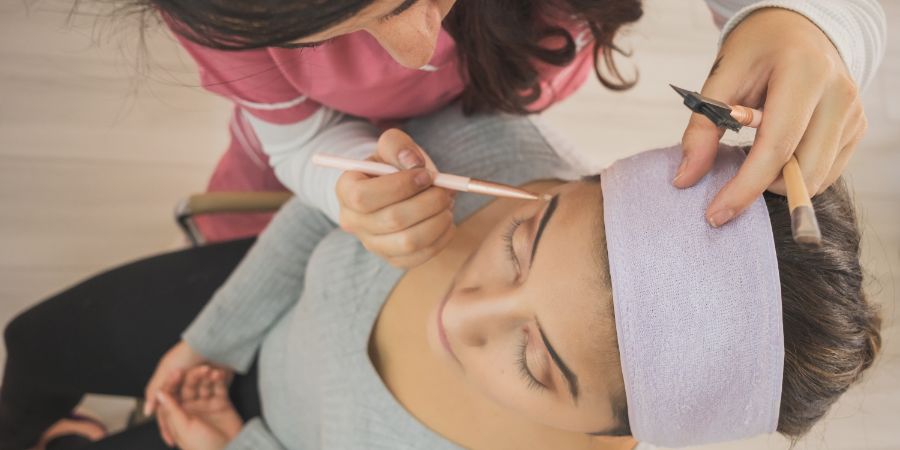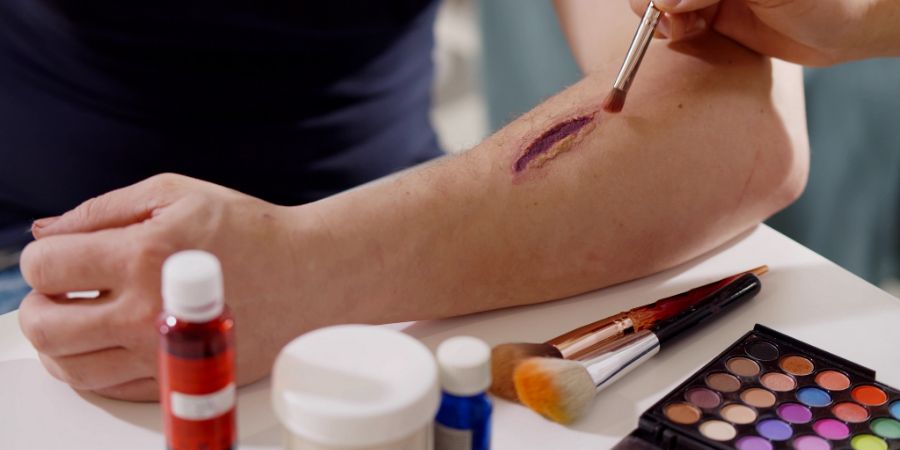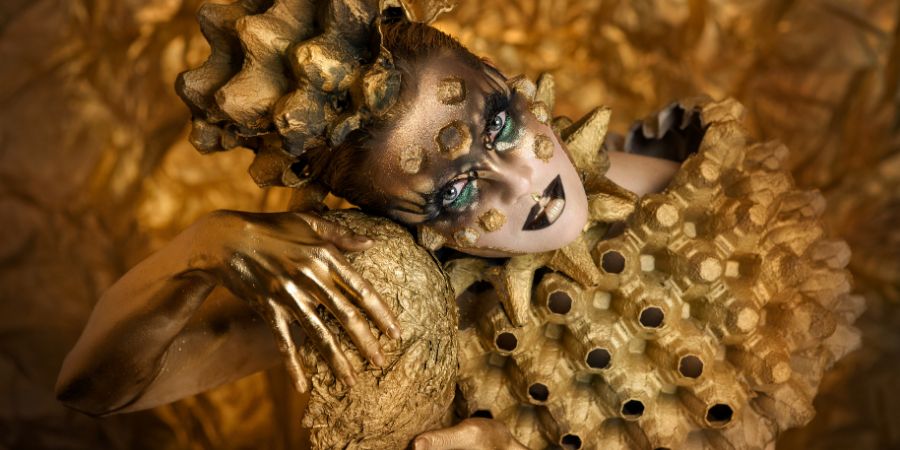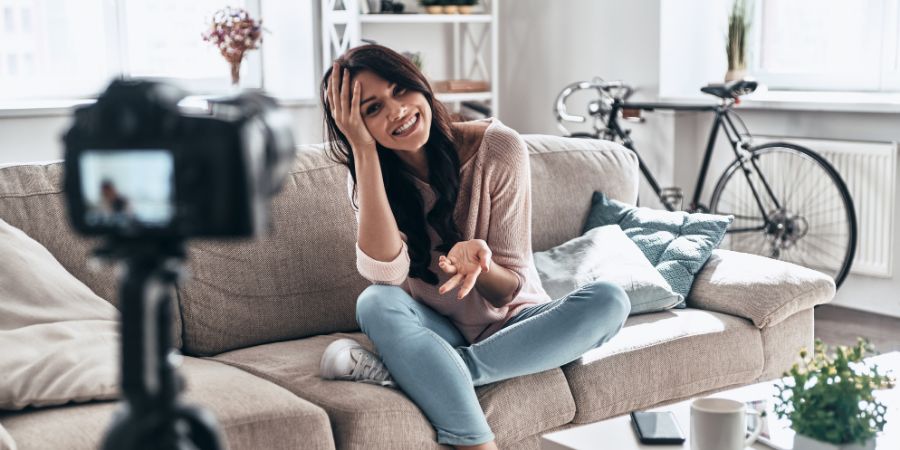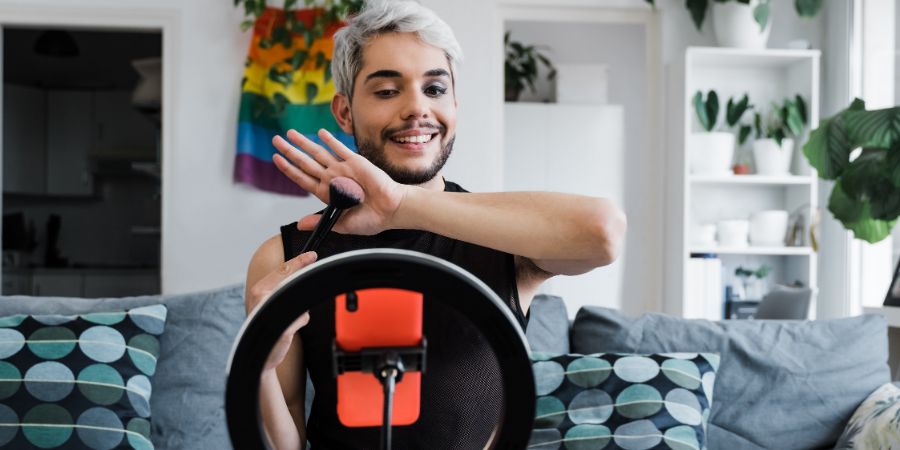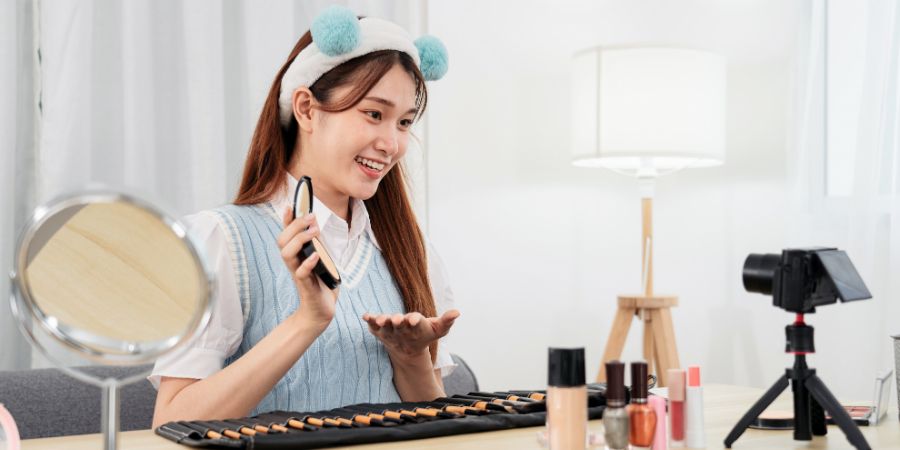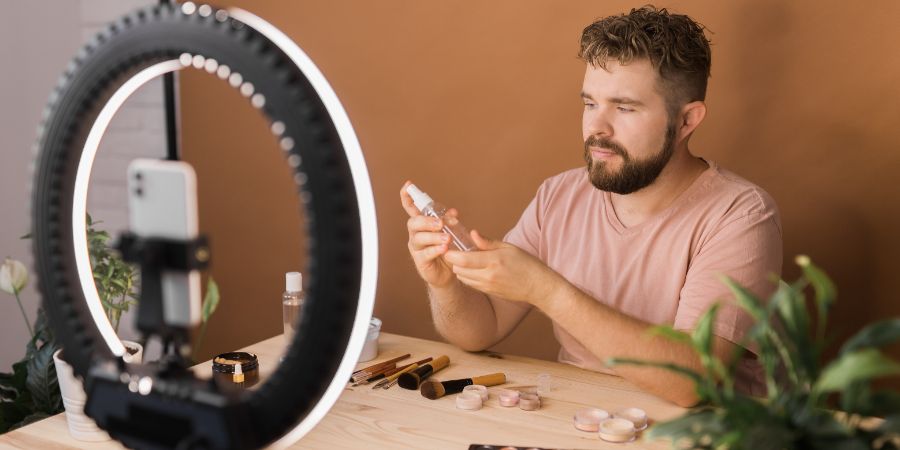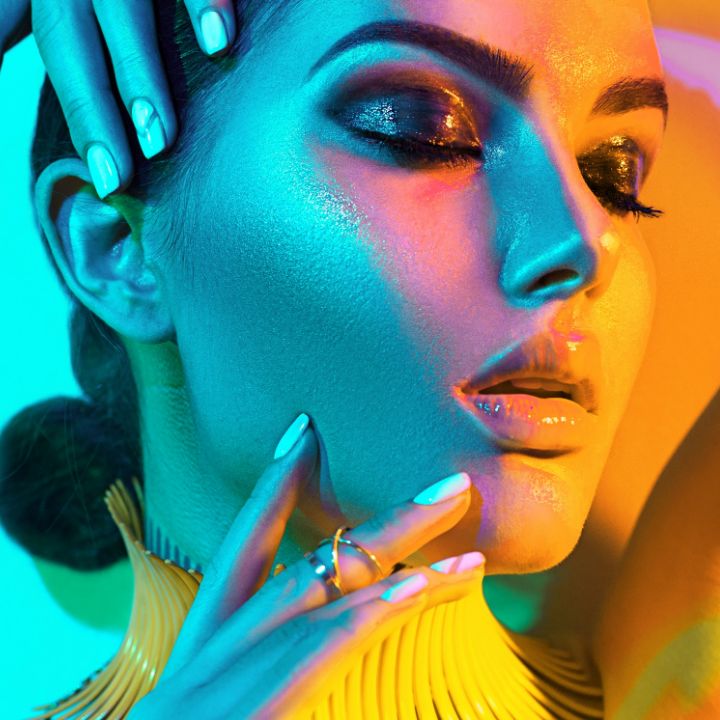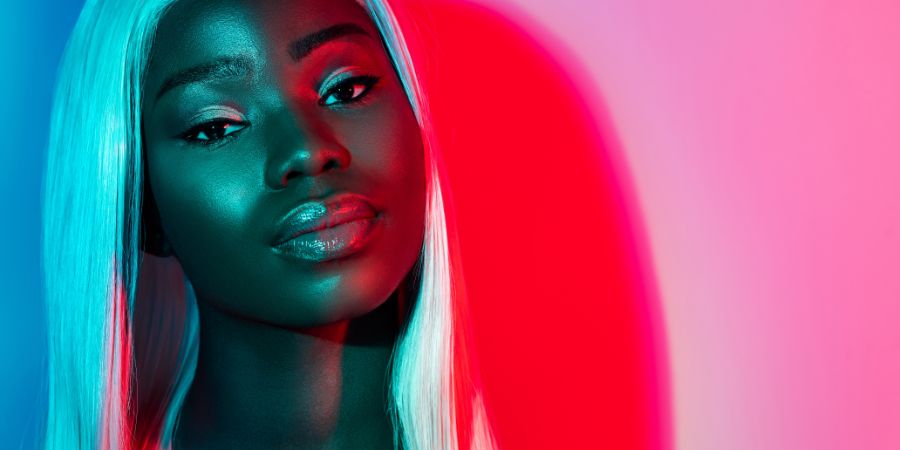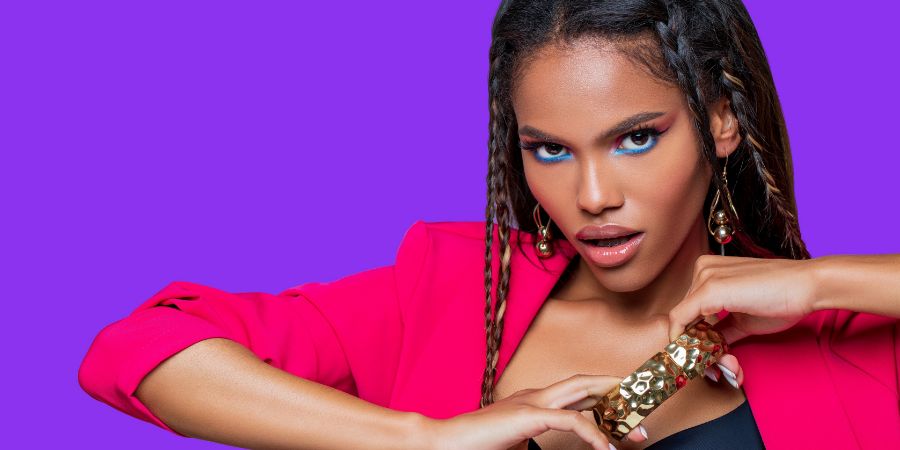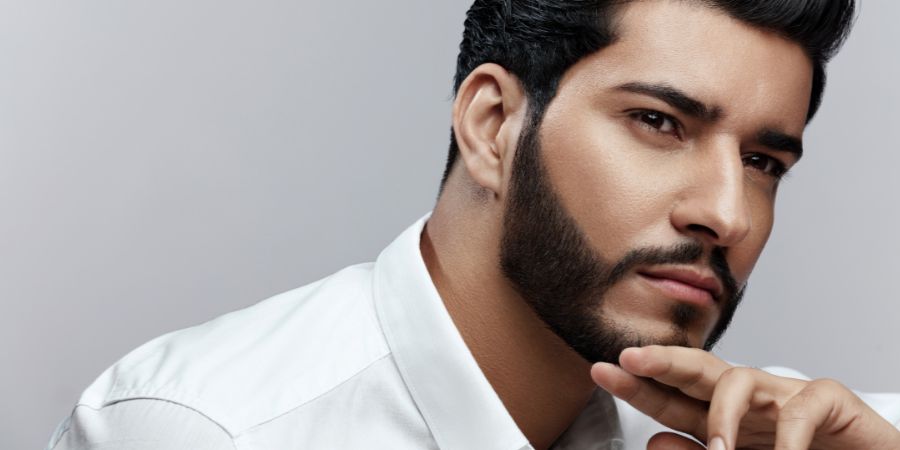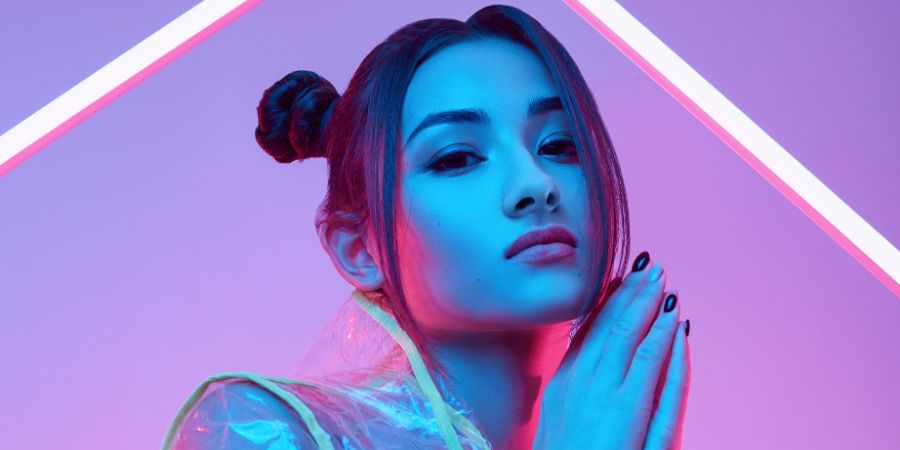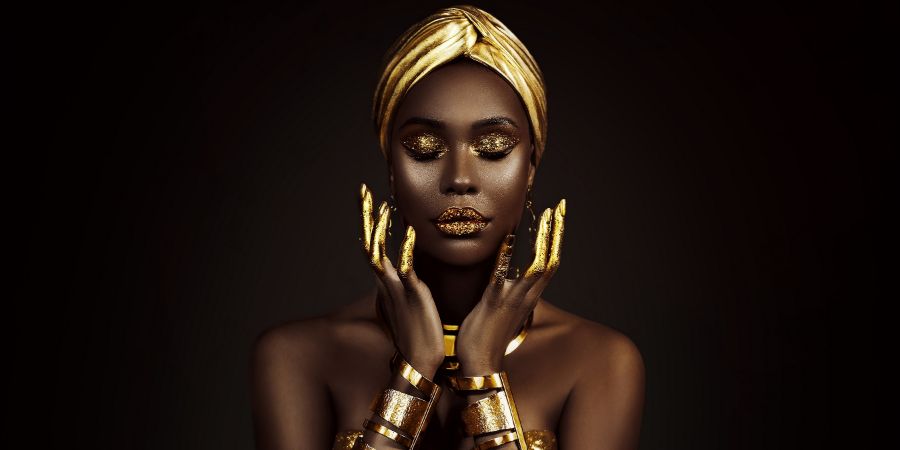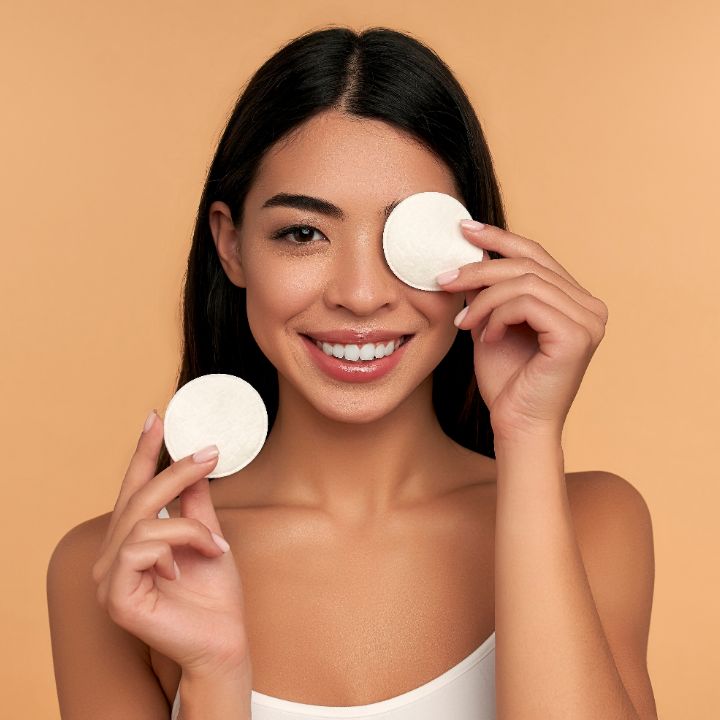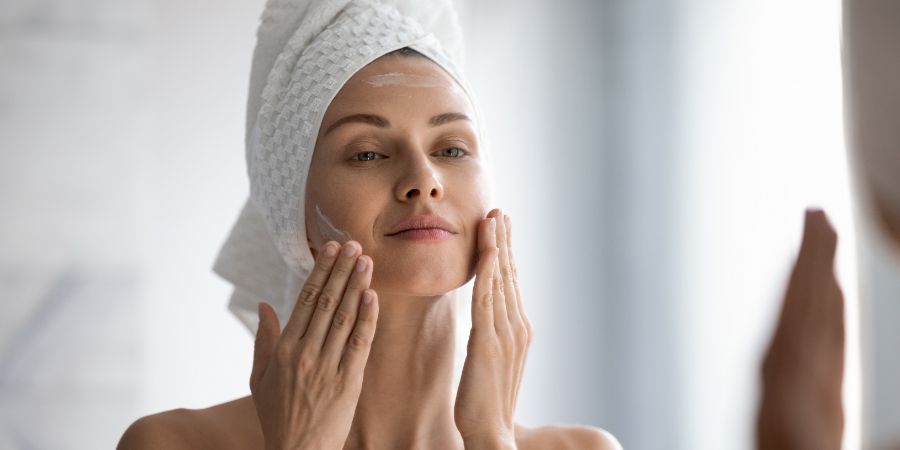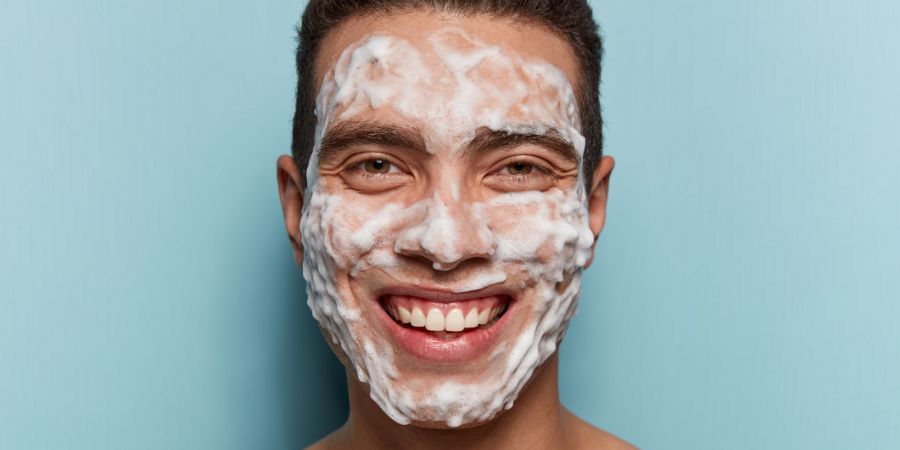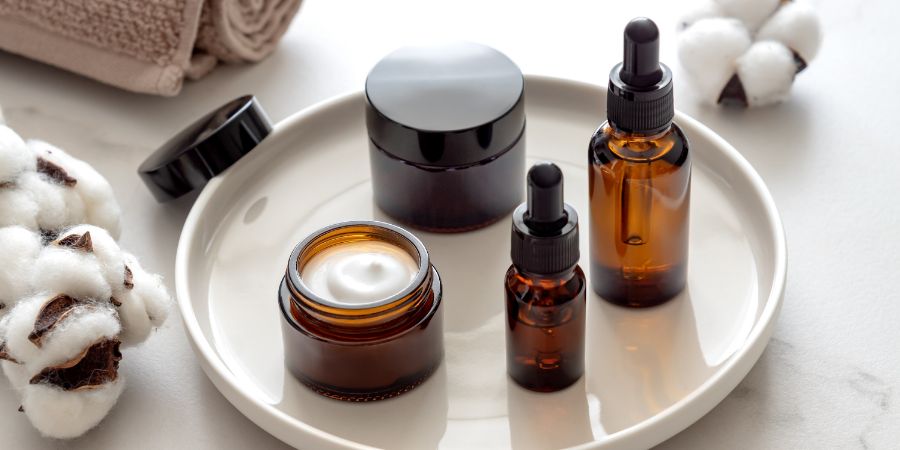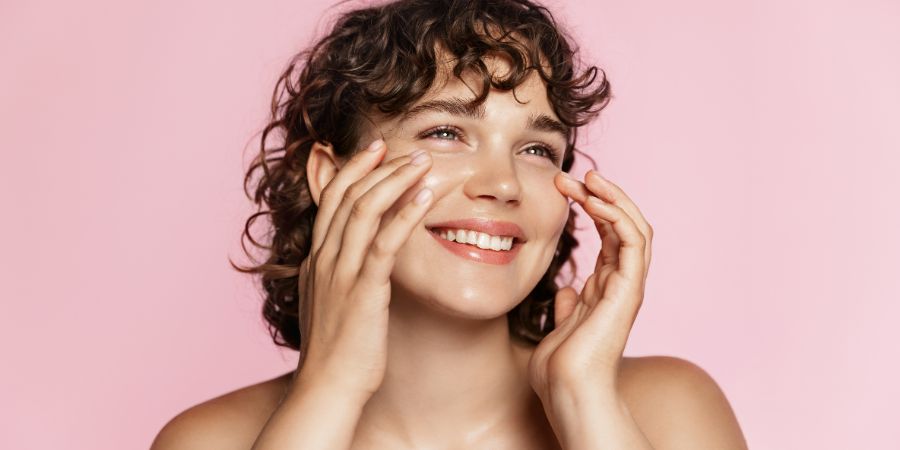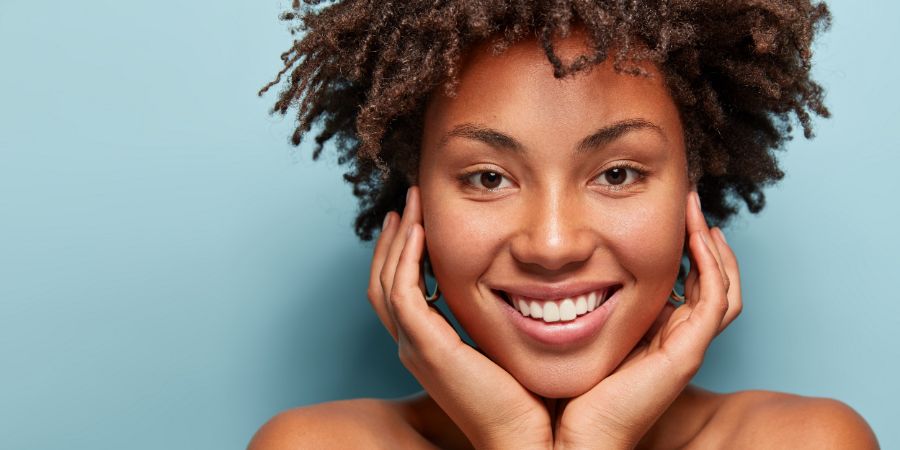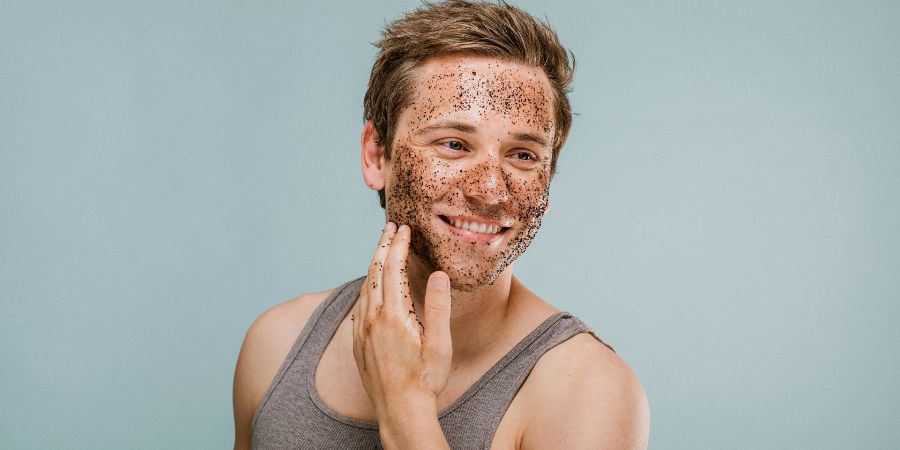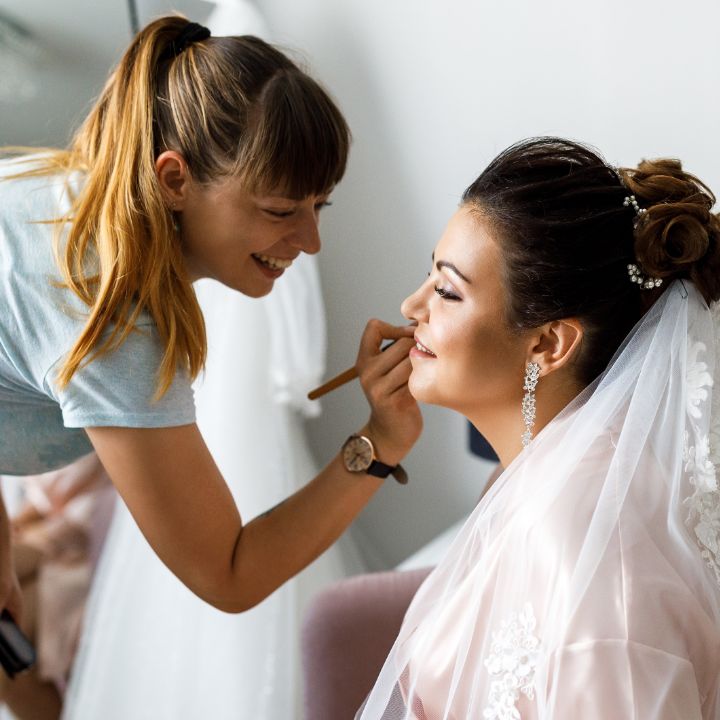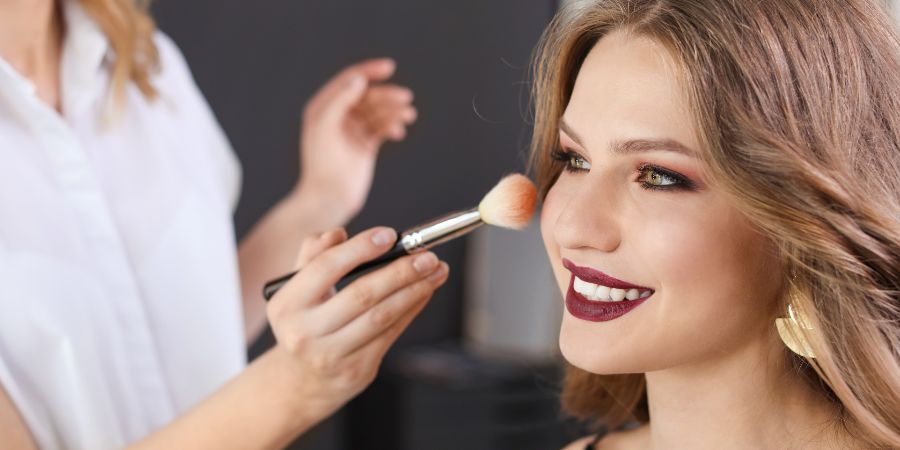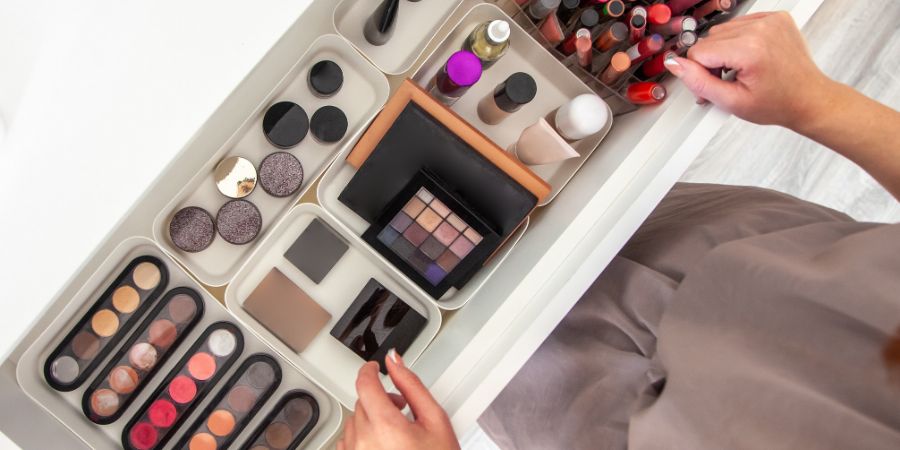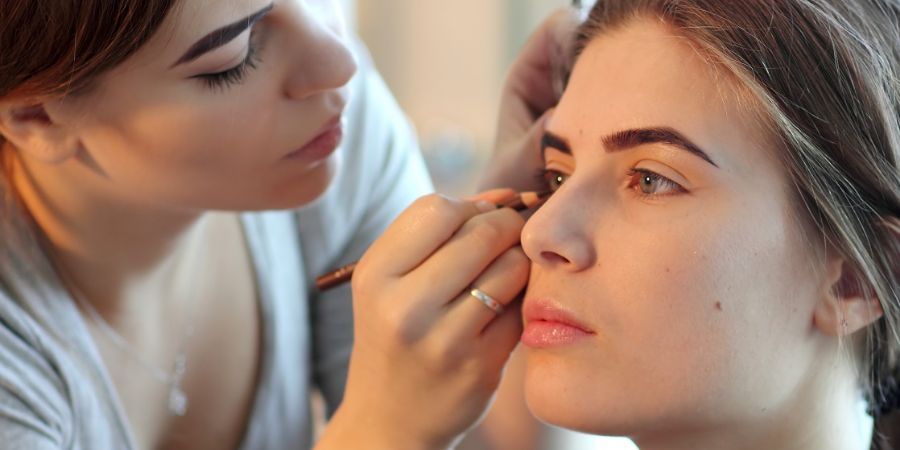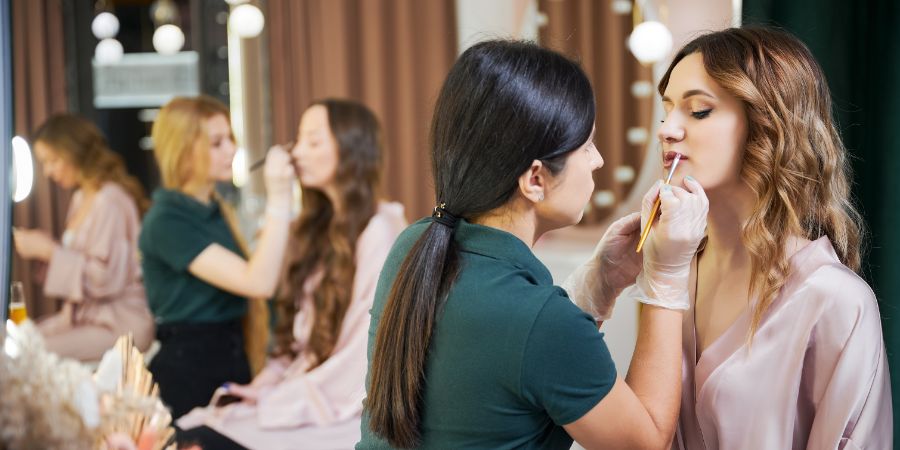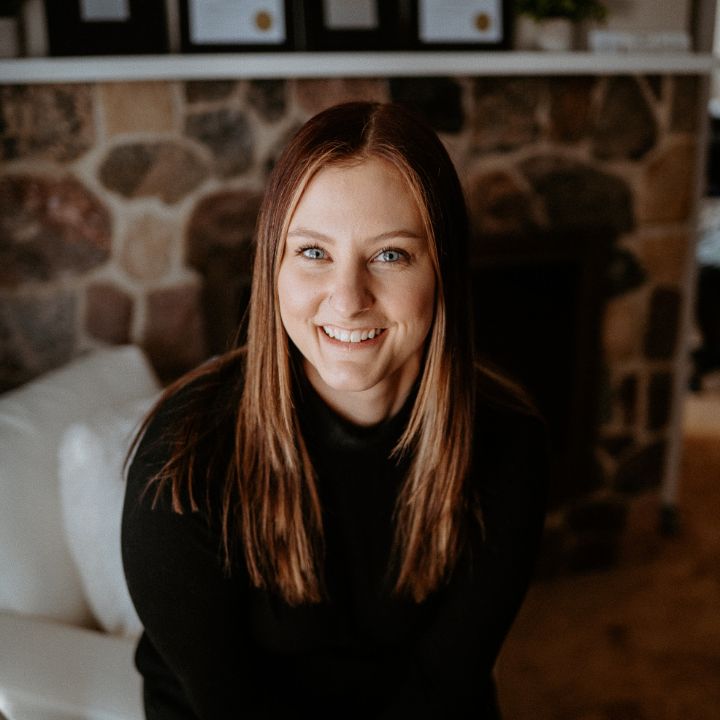
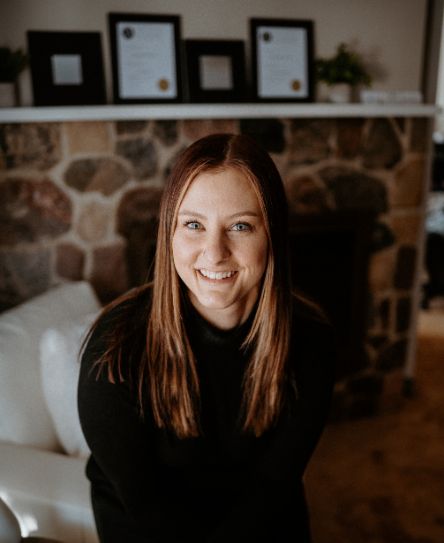
Regina, Saskatchewan
Meet QC Makeup Academy graduate, Samantha Herom! Tell us a little bit about yourself, Samantha!
Hi, I’m Sam! I am a Registered Massage Therapist, a certified Master International Makeup Professional (as a QC Makeup Academy graduate), and a Lash & Brow technician.
When I’m not busy working one of my many jobs, I am knitting, reading, and/or hanging out with my husband and our three fur babies. We have two cats (Luna and Bean), as well as a dog Harley. I love golfing and hanging out at my cabin in the summer.
Oh, and I LOVE a good London Fog!
When (and why) did you realize you wanted to pursue a career in the makeup and beauty industry?
I’ve wanted to pursue a career in makeup for as long as I can remember. I always wanted to be doing my own makeup, as well as my friends’ makeup. However, it wasn’t until later in life (when I had what I like to call my “2nd quarter life crisis”) that I finally realized I still really wanted to pursue a career in makeup. So, I decided to take a course!
Why did you decide to pursue your certification training online (rather than in-person) – and how did you both hear of QC Makeup Academy?
I decided to take my course online because I was working full-time and it gave me the flexibility to work on my course at my own pace. I found QC Makeup Academy while researching online makeup schools in Canada.
Why did you choose to enroll with QC Makeup Academy? (E.g., What was it about our school that won you over, compared to other online makeup schools out there?)
I enrolled in QC Makeup Academy (as opposed to a different school) because QC was one that was internationally known. Plus, QC is an accredited school. On top of that, it’s really great that you get two years to finish the course, as working at my own speed was very important to me. I also liked that every unit came with verbal feedback from a real, professional makeup instructor.
You’re a QC Makeup Academy graduate of our self-paced, online Master Makeup Artistry Course – and thus, a globally-certified Master International Makeup Professional (MIMP). Tell us about your experience with this program! What was the most challenging aspect of this course for you? How about the most rewarding? Additionally, what was your favorite hands-on assignment and why?
I enjoyed this program! It was really great for being self-paced, and it has a great community via the private, student-only Virtual Classroom on Facebook. People are very helpful on there.
I think the most challenging aspect of the course was retraining myself from social media looks to learning proper techniques, and going back to the basics. The most rewarding thing about QC’s MMA program is when you finally get something that you’ve been struggling on, and it’s noticed by your peers and instructors.
My favorite hands-on assignment was basically all of Unit F! It had the most fun assignments. You really get to explore new areas of makeup and show your creative side!
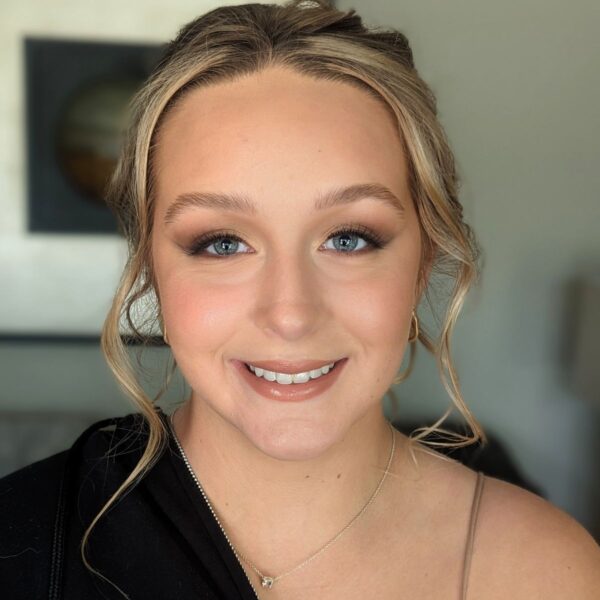
What would you say is the #1 biggest and best lesson you learned in the Master Makeup Artistry Course?
The best thing that you can do for yourself is KNOW THE BASICS AND MASTER THE PROPER TECHNIQUES. Once you’ve mastered that, you can do anything!
Your tutor was QC executive instructor and celebrity MUA, Nathan Johnson. What was it like having him as a tutor? In what ways did he help you grow as a makeup artist?
Nathan is a “tell it like it is” kind of person. Sometimes, you wont like what he has to say. Just know, however, that it IS coming from a good place. He truly wants his students to succeed and have an amazing professional career!
I think he pushed me really hard; really made me look at my work and break out of my social media tendencies. And for that, I am extremely grateful.
RELATED: Get to know industry powerhouse and QC Makeup Academy executive instructor, Nathan Johnson!
Speaking as a QC Makeup Academy graduate, do you believe that all professional makeup artists should be properly trained and certified? Why or why not?
I think it’s very important for makeup professionals to be properly certified. There are so many things that you need to know, such as:
- Proper sanitation of products;
- Hygiene;
- Skin types and conditions, etc.
Moreover, it’s also important to learn how products work, different techniques to use, and different styles of makeup. These are things you may not know unless you are properly trained!
How would you describe your style as an MUA?
My style is very natural. I don’t like full-coverage looks. Rather, I like to make people feel like themselves – just a little more enhanced.
That said, I also have a very creative side and really enjoy doing more theatrical and costume makeup! So, I guess you could say I go from one extreme to the next!
What made you decide to open your own makeup business, SH Massage & Aesthetics?
I am a Massage Therapist primarily. When I finished school for makeup, I decided that I wanted a space to call my own; one where I could combine ALL of my services. So, I opened up my own business and I couldn’t be happier!
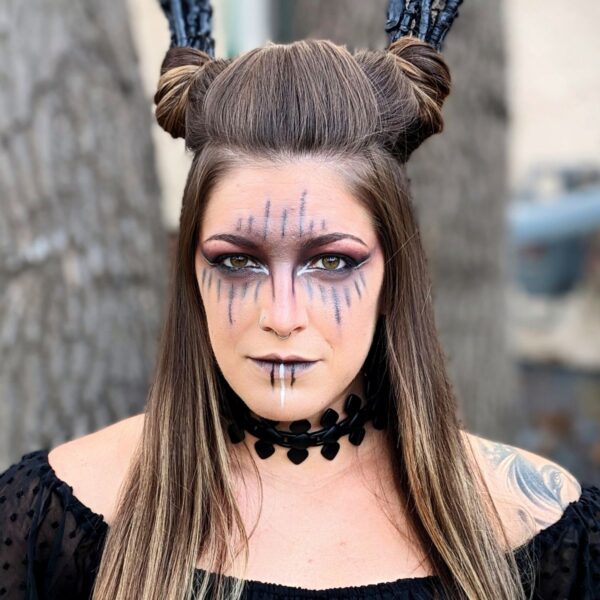
What would you say have been the biggest challenges about launching/running your own business? Alternately, what would you say have been the greatest rewards?
The most challenging thing about launching my business is definitely marketing myself. I think, over time, I’ve gotten better at it. But it was a bit of a learning curve!
The most rewarding thing is gaining business and referrals. It’s such a great feeling, knowing you made someone so happy that they referred you to someone else. It’s also such a rewarding feeling, making someone feel beautiful with makeup.
PRO TIP: Discover how YOU can start a thriving makeup business from scratch!
What makeup services do you currently offer clients?
I offer a little bit of everything, but I would say I’m primarily a bridal artist. I’m from a small city, so bridal and special events are normally what make up the most clientele.
In addition to being a certified MUA, you’re also a Registered Massage Therapist and trained Lash/Brow Technician (as you’ve mentioned). Do you also offer these services to clients as well? If so, tell us more about that!
I am! I’ve been a RMT for five years now, going on six, and it’s an amazing job. I love knowing that I can help people with injuries and their general well-being. It is a super rewarding job and my clients are the best!
I just recently became a Lash & Brow Technician and it’s so much fun, too. I do lash lifts and tints, as well as brow lamination and tints. I thought it would be a great tool to add to my belt, alongside my makeup services.
QUIZ TIME: What are the differences between a cosmetologist and a makeup artist?
Of all the services you currently offer, which is your personal TOP favorite to provide and why?
Right now, I currently LOVE doing Brow Laminations and Tints. It’s just a new, fun, and creative thing that’s different from what I normally do. Even when I am doing a makeup service, I love doing people’s eyebrows. There’s just something about them that makes the face!
Tell us a little about your business strategies with regards to: marketing yourself, networking, attracting/booking clients, building your portfolio, etc.!
I mainly use Instagram for marketing myself. It’s also a great tool for building your portfolio and being able to share those photos of your work.
Additionally, I also have a website which I use to answer questions people have, as well as share more about myself. It also has a link to an online booking site, which is super convenient for clients to use.
RELATED: Make sure to check out our How-To Guide for building YOUR professional makeup artistry portfolio!
Which makeup technique do you feel you are strongest at? On the flip side, are there any techniques you’re currently working on improving?
Not to toot my own horn, but I am a pro at false lashes! I’ve been doing them since I was little for dance and cheerleading. So, I had a bit of an advantage when learning how to do them for the course. That said, I think I’ve gotten even better at it!
I also think that my strongest makeup techniques are eyeliner and eyebrows. I really enjoy doing both and find that they come really easy to me.
I’m still working on blush, bronzer, and highlight. I have come a long way, for sure. But it’s still something I want to continue to improve on so that it looks flawless!
You live in Regina, Saskatchewan – a large Canadian city with a population of just under 250,000. With so many competitors in and around your area, how does SH Massage & Aesthetics stand out from the rest? What makes you and your business unique?
I think what makes me stand out is that I offer a variety of services. It really helps with word-of-mouth clientele! For instance, I could be treating a massage client and they’ll ask me about brows or makeup. Then maybe, they come in for a different service, or they tell their friends and family about it.
I don’t see many – if any at all – RMTs that also offer makeup and lash/brow services. So, I think that makes my business pretty unique!
Do you have any advice for other aspiring MUAs and fellow QC Makeup Academy graduates alike who dream of running their own business?
Offer a variety of services and keep learning!! I have continued on to do other small makeup courses, in order to keep up with current trends, new products, etc. Never stop learning, as that will definitely help you to become successful in your own business AND make you stand out!
Also, believe in yourself! Things may start off slow, but keep going and pushing through when things feel like they’re getting tough. It gets easier and better… And it’s so rewarding to see all you can – and did – accomplish when looking back!
In your opinion, what are the most rewarding aspects of being a makeup artist?
I think the most rewarding part about being a makeup artist is the feeling you get when someone tells you they love the way they look after an application. It really makes you feel good when you can make someone’s day with just a little bit of makeup!
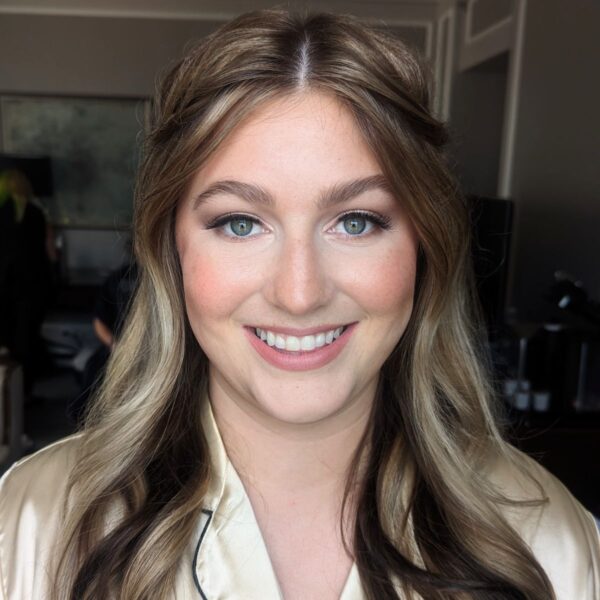
In your own words, can you tell us why you believe hiring a professional makeup artist is worth the cost?
I believe it’s worth the cost because we are trained professionals. Therefore, we know the techniques, the proper sanitization of products and brushes, and we have a lot of knowledge on products to use – and how to use them properly.
Do you remember your very first professional makeup job? Tell us about it! What did you learn from it, what went well, what didn’t go as planned, etc.?
My first professional makeup job was for a bride last summer, and it was my first bride ever. So, I was very nervous, because it’s their big day and you want to make sure you do your best work!
We did a trial, and from that trial, I was able to see the things I needed to work on before the actual day of the wedding. I always make the bride tell me how it wore throughout the trial day, if they liked something, or if they didn’t.
I would not say that things didn’t go as planned. Overall, actually, everything went very smoothly. That said, I’ve definitely grown as an artist from that first application until now!
What’s your favorite makeup style and why?
I LOVE a good glam moment. Give me a smokey eye with a sharp liner and some shimmer shadow any day!
Lately, mind you, I’ve been loving a more natural makeup look. Clean, minimal, and simple. I think I like the natural look because it’s a challenge for me. I was so used to going over the top with my makeup that it’s hard for me to tone it back.
Doing a “no makeup” makeup look makes me work harder, strangely!
Who are some of your makeup gurus/inspirations?
- Kelsey Deenihan Fisher – I just think that her work is flawless. I LOVE the way she does the skin. It just looks so clean and fresh, and not ever too much!
- Mario Dedivanovic, a.k.a. Makeup by Mario – I’ve loved him long before he started his brand (which I also love). I actually love watching him do makeup because he just makes it look so effortless!
- Ash K Holm – I’m always so obsessed with Shay Mitchell’s makeup. So, of course I had to find out who the artist was! Ash is another celebrity makeup artist who just clearly has mastered the art.
What words of wisdom would you give to other makeup lovers out there who dream of a career in the beauty industry, but are hesitant to take the leap?
I have two very cheesy words (or rather, sentences) of wisdom, but I swear by them:
- It’s never too late to start! Personally, I put off taking a makeup course for 11 years. But if it’s something you want to do, do it!
- The hardest part is getting there! I went back and forth thinking about whether it was a good idea or not (to pursue this career). But I hit the register button and I am SO happy I did!
As a QC Makeup Academy graduate, why would you recommend QC’s self-paced, online makeup certification training to others?
As a QC Makeup Academy graduate, I would recommend QC because you get to work at your own pace. Secondly, there is so much community within the school that’s super helpful and there to support you the whole way through. Plus, you get a tutor and actual verbal feedback from them, which is incredibly beneficial.
To date, what do you consider to be the proudest moment of your career so far?
I think my proudest moment is honestly just getting bookings. I thought it would take a while longer to get my foot in the industry… But it’s been so amazing to have people contact me because they know someone that worked with me, or they found me on social media and liked my work. It’s the best feeling, for sure!
What’s in store for you and SH Massage & Aesthetics the rest of this year and beyond?
There are a lot of things I would like to do to grow my business, such as starting one-on-one lessons (I’ve been asked lots for this; I just haven’t taken the plunge yet). I’ve also been asked to shop for people for makeup, which I think would be really fun. I just need to look into the logistics and pricing of it!
Also, I have a lot more weddings this year. So, I am excited to keep doing that. I also want to do another Halloween promo. I did one last year and it was so much fun!
Imagine: You’re trapped on a deserted island and can only have THREE makeup products and/or tools with you. Which do you choose and why?
- Moisturizer/tinted moisturizer with SPF. I choose this product because firstly, it’s going to help your skin from the sun. Secondly, you can put it on your face so you look fresh and healthy!
- Brow Gel (currently loving the Estee Lauder). I like my brows to look fluffy, and I really like the look of a clean face with nice, fluffy brows.
- For practical reasons, I am also going to bring a lip chap with SPF because we don’t want burnt lips!
